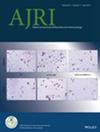The Role of Cryptotanshinone Regulates HTR-8/SVneo Cells Activity Through the p53/STAT3 Pathway in Unexplained Recurrent Spontaneous Abortion
Abstract
Objective
This study sought to investigate the therapeutic effects and mechanisms of cryptotanshinone (CT) on unexplained recurrent spontaneous abortion (URSA).
Methods
The DBA/2 male and CBA/J female mice were caged together to construct a URSA model before treatment with high and medium-low doses of CT. Enzyme-linked immunosorbent assay (ELISA) was used to detect levels of interleukin (IL)-1 beta (β), IL-17, and IL-22 in serum in each category of mice. Hematoxylin–eosin (HE) pathology was employed to detect decidua and uterine tissues, while polymerase chain reaction (PCR) was utilized to ascertain relative expression levels of serum messenger ribonucleic acid (mRNA) of IL-17, IL-22, and IL-1β. The effects of CT on H2O2-induced HTR-8/SVneo cells were investigated using cell counting kit-8 (CCK-8) assays and cell migration assays, while flow cytometry was used for the detection of apoptosis. Network pharmacology was used to analyze the mechanism of CT in the treatment of URSA. The repair effects and underlying mechanisms of the tumor protein 53 (p53) inhibitor and signal and transducer of transcription 3 small interfering RNA (STAT3 siRNA) were evaluated using ELISA assays, CCK-8, cell migration assays, flow cytometry, immunofluorescence, and Western blot techniques.
Results
Different doses of CT exerted protective effects on the uterine tissues of URSA. Also, CT could reduce levels of IL-17, IL-22, and IL-1β and their relative mRNA content in the serum of URSA mice, as well as increase the activity and migration rate of HTR-8/SVneo cells, and reduce the rate of apoptosis. Using p53 and STAT3 as mechanistic targets, we found that the p53 inhibitor, STAT3 siRNA, and CT restored the migratory activity of HTR-8/SVneo cells, reduced their apoptotic rate, and simultaneously downregulated the expression of retinoic acid receptor-related orphan receptor γt (RORγt) and vascular endothelial growth factor (VEGF).
Conclusion
The mechanism by which CT regulated the activity of HTR-8/SVneo cells involved the inhibition of p-p53, with STAT3, RORγt, and VEGF functioning as downstream targets of the p53 pathway.


 求助内容:
求助内容: 应助结果提醒方式:
应助结果提醒方式:


